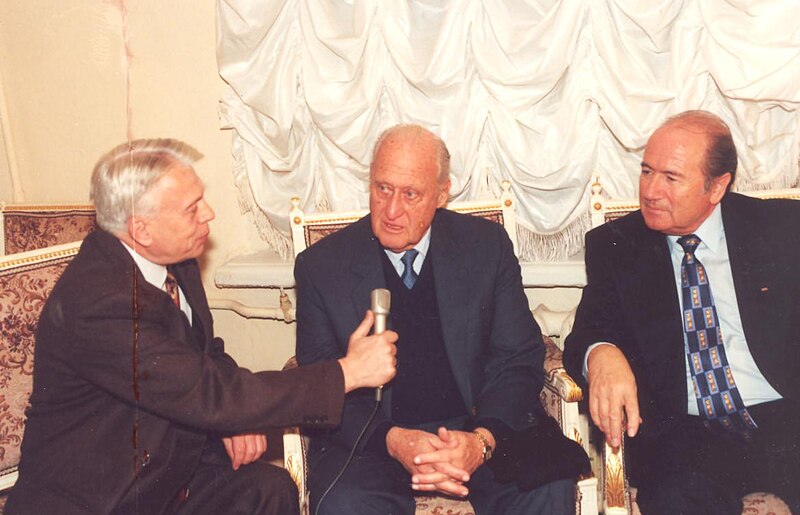In 2015, charges against FIFA officials revealed widespread corruption within the sports organization, involving bribery, fraud, and money laundering. This scandal tarnished FIFA’s reputation and led to significant changes in its leadership and governance, impacting soccer fans globally. The crisis underscored the need for transparency and accountability in sports organizations.
Background
FIFA was founded on May 21, 1904, by seven European football associations to oversee international football matches and establish regulations. Over the years, it has become the world’s football regulatory body, organizing major events like the FIFA World Cup, setting game rules, regulating player transfers, promoting football’s growth, and ensuring fair play.
Before the 2015 scandal, FIFA was respected for its global influence in football, despite growing allegations of corruption. It was seen as a powerful organization capable of uniting countries through football, managing international football rules, sponsorships, and the global sports economy.
The Scandal Unfolds
The FBI and IRS discovered patterns of bribery and corruption within FIFA, leading to a broader investigation. They found financial irregularities involving former CONCACAF General Secretary Chuck Blazer, revealing tax evasion and illegal financial activities. Blazer’s cooperation helped uncover a larger corruption scheme involving bribery for World Cup hosting rights and other significant tournaments.
On May 27, 2015, Swiss authorities raided the Baur au Lac hotel in Zurich, arresting several top FIFA executives on charges of wire fraud, racketeering, and money laundering. Those arrested included FIFA Vice Presidents Jeffrey Webb and Eugenio Figueredo, as well as Eduardo Li and Jack Warner. These officials were accused of long-term bribery schemes involving over $150 million in World Cup bids, marketing deals, and broadcasting rights.
Key Figures Involved
- Sepp Blatter: Former FIFA president accused of fostering a culture of bribery and corruption.
- Jeffrey Webb: Former FIFA Vice President charged with racketeering, wire fraud, and money laundering.
- Jack Warner: Former FIFA Vice President charged with racketeering, wire fraud, and money laundering.
- Eduardo Li: Former President of the Costa Rican Football Federation, charged with wire fraud, racketeering, and money laundering.
- Julio Rocha: Former president of the Nicaraguan Football Federation, accused of accepting bribes.
- Jose Maria Marin: Former president of the Brazilian Football Confederation, charged with accepting bribes.
- Costas Takkas: Accused of assisting Jeffrey Webb in obtaining illicit payments and engaging in money laundering.
- Rafael Esquivel: President of the Venezuelan Football Federation, charged with racketeering, wire fraud, and money laundering.
- Eugenio Figueredo: Former President of CONMEBOL, charged with accepting bribes.
- Nicolas Leoz: Former President of CONMEBOL, accused of receiving bribes over several decades.
The Charges
- Bribery and Kickbacks: FIFA officials accepted bribes for exclusive media and marketing rights to tournaments.
- World Cup Bidding Process: Officials accepted bribes from bidding nations, compromising the fairness of the bidding process.
- Money Laundering and Fraud: Officials laundered corrupt funds through complex financial systems and misused funds intended for FIFA’s development projects.
Impacts on FIFA
Key officials faced suspensions and resignations, including Sepp Blatter, who resigned as president amid criticism. These events triggered widespread calls for reform and transparency within FIFA.
FIFA implemented governance reforms to enhance transparency and accountability, such as modifying the FIFA Council and establishing independent oversight bodies. These efforts aimed to rebuild trust and credibility in football governance.
The scandal severely damaged FIFA’s reputation and public trust, exposing deep-rooted governance issues. Despite reforms, restoring credibility remains an ongoing challenge.
Broader Implications
The scandal affected players, sponsors, and the overall management of the sport, prompting calls for more openness and responsibility in football management.
Legal and Political Ramifications: The scandal led to international cooperation in the investigation and changes in laws to enhance transparency and accountability in sports organizations.
Sponsorship and Financial Consequences: The scandal harmed FIFA’s finances and relationships with sponsors, leading to suspended deals and a damaged reputation.
Key Moments and Revelations
Key Trials and Sentences: Several significant figures, including Jeffrey Webb and Jack Warner, faced trials and sentencing. These legal actions were crucial in holding individuals accountable for their corruption.
Significant Revelations: The investigation revealed systematic bribery schemes and money laundering, emphasizing the need for reforms in international sports governance.
Notable Whistleblowers: Chuck Blazer and the Warner brothers played key roles in exposing the corruption within FIFA, assisting authorities in prosecuting corrupt officials.
Conclusion
The 2015 FIFA corruption scandal exposed widespread corruption, leading to significant legal actions and reforms. Despite efforts to improve transparency and accountability, rebuilding public trust remains a challenge. The scandal underscores the need for ongoing vigilance, ethical leadership, and international cooperation in football governance.

